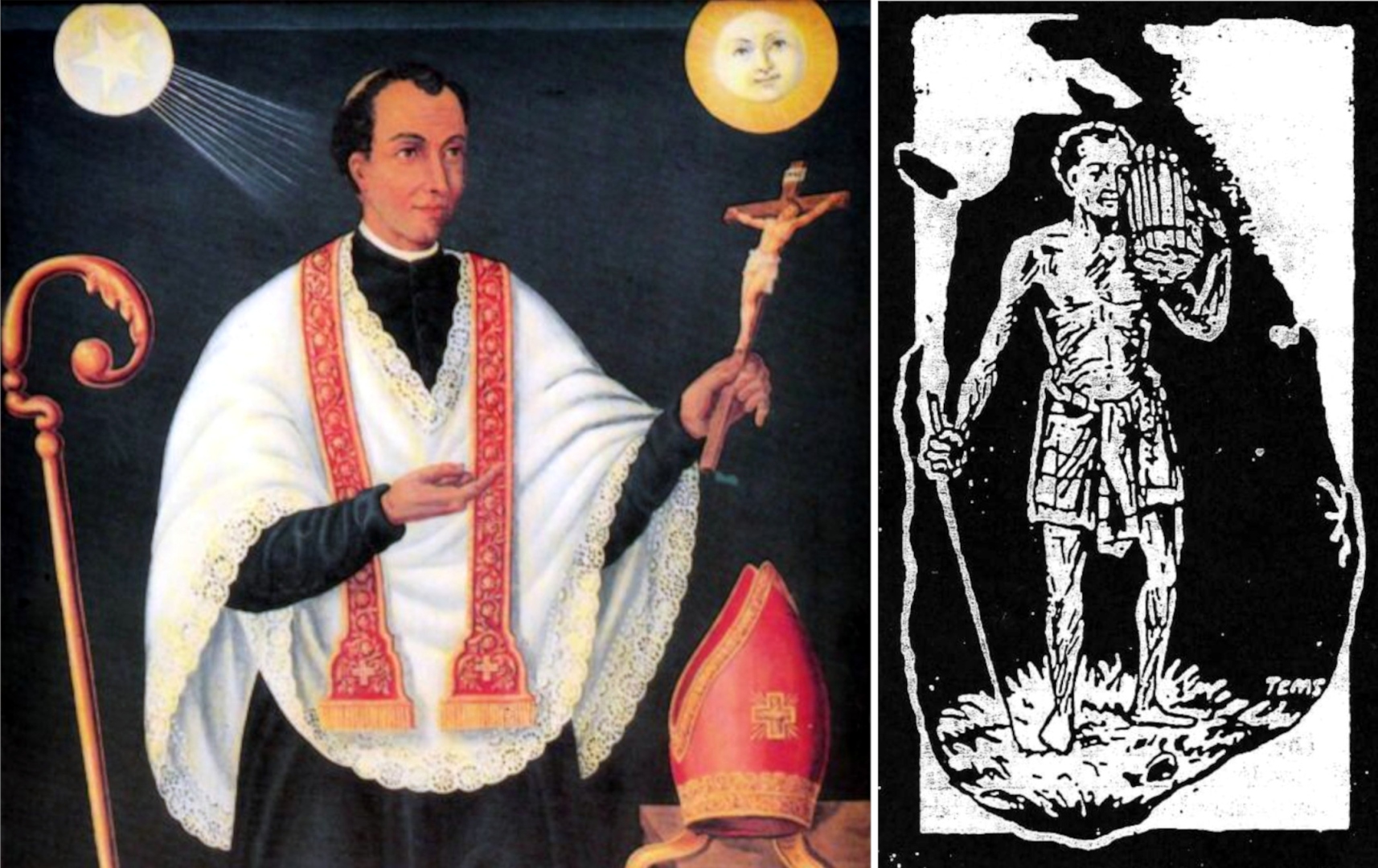GLOBAL GOENKARS SPEAK

[Left] A picture of St Joseph Vaz depicted as a priest. [Right] A picture of St Joseph Vaz depicted as an ordinary Indian coolie.
CALIFORNIA
What’s in a Name?
Our names are what establish our identity, be it racial or national and cultural. Goans tend to romanticise the Portuguese past. Our ancestors didn't voluntarily change their names to Portuguese and western names. They were forced to change their names to Portuguese names when they were converted and baptised. Like natives under Portuguese and Spanish colonial powers, we had to give up our pre-Christian names and identities upon conversion.
In Goa, Christian converts also had to give up their native dress. As a result, much of the migration of Mangaloreans from Goa to Kanara was due to this resistance to loss of Indian cultural identity under the Portuguese. Today, in post-Independence in India, many priests and Catholics are incorporating an Indian name into their baptismal names.
But the Church in India and in Sri Lanka where he worked as a priest and missionary, still insist on his Portuguese (Padre Jose Vas) or Anglicised (St Joseph Vaz) name and depicts him exclusively as a western robed priest. This does not do anything to win Indians who are proud of their native identity.
Our Joseph Naik Vaz Institute made previous attempts to show that St Joseph Vaz is not simply a European, Portuguese era Saint, but a native son of the Indian soil.
Including ‘Naik’ into our Institute name
Our own efforts to work for the Beatification and Canonisation of St Joseph Vaz began in 1978 and in California, on the outskirts of the Goan diaspora. After examining his life and methods of evangelisation that included respect for native names, native identity, and cultures, we incorporated his pre-Christian Hindu family name and registered our group as “Joseph Naik Vaz Institute” in 1980. We have also regularly used illustrations of him dressed like an Indian coolie, just as he entered Sri Lanka and as the traditional Indian “Sanyasi.”
In 1978, we had discovered a very solid reference to his pre-Christian family name “Naik” in an article by Goan Rev. A. Jose da Fonseca in ‘Souvenir do Tricentenario do Veneravel Pr. José Vaz’ (Margao: Tipografia Borcar, 1961, pg.90),1 titled “Um Semaforo da Estirpe Goesa.” Fr Fonseca was a prominent member of the Tribunal for the Cause of Joseph Vaz. In English, this is "The Tricentenary Souvenir of the Venerable Fr José Vaz, 1961∫"
We were also inspired by the story of the Saint name for Native American Mohawk St Kateri Tekawitha. She was born in Canada in1656 and given the Mohawk name Kateri Tekawitha by her non-Christian parents. She was baptised as “Catherine” after St Catherine of Siena, at age 19.
In 1980 – Just when we were naming our Institute in California to work for the Beatification and Canonisation of then Venerable Father Joseph Vaz – she was beatified by Pope John Paul II under her Mohawk pre-Christian name, Kateri Tekawitha, and not under her western name of Catherine. So we were inspired to add “NAIK” to our Institute’s name.
Pre-Christian and baptismal names
In the State Archives of Goa and earliest biographies, his baptismal name is recorded as “Jozeph Vaas” not “José Vaz.” In modern times it came to be written as Vas or Vaz. See the Frontispiece of “The Life of Venerable Father Joseph Vaz” by Fr S.G. Perera, S.J. He signed his letters “P. Jozeph Vaas”.
Our second attempt to have his Indian family name added was in 2020, when we proposed that there should be an effort to make St Joseph Vaz Patron Saint of First Responders in an epidemic because he had nursed the abandoned smallpox victims in Kandy. At that time, we also appealed to the Sri Lankan Bishops to consider inserting his Indian family name into his official name. But they did not want to ask the Vatican for any formal change in the name of St Joseph Vaz.
Why should both his pre-Christian and baptismal names be used for naming new St. Vaz projects in the post-canonisation era?
Very luckily, the first canonised Goan Saint used Inculturation and full respect of native identities and heritage in his method of evangelisation, and he allowed converts to keep their original names. When St Joseph Vaz baptised his converts in Sri Lanka, he did not require them to give up their original Sinhalese or Tamil names and take Portuguese names. That’s why many Sri Lankan Catholics bear their original Tamil and Sinhalese family names to the present day.
If his Indian name is not on public display in his honour, the ordinary Indian man or woman in the street will keep on getting the image of our Goan native Catholic Saint who honoured native identity as a western saint with a Portuguese or Anglicised name, with no hint of his Indian roots and dedication to Inculturation.
Conversely, if the Church and Catholics were to include his pre-Christian name of “Naik” along with his Christian name in our post-Independence era, the majority of Indians who are not Christian, seeing that name would be proud that this Saint was an Indian like them.
[The writer is founder-president of Joseph Naik Vaz Institute in California.]